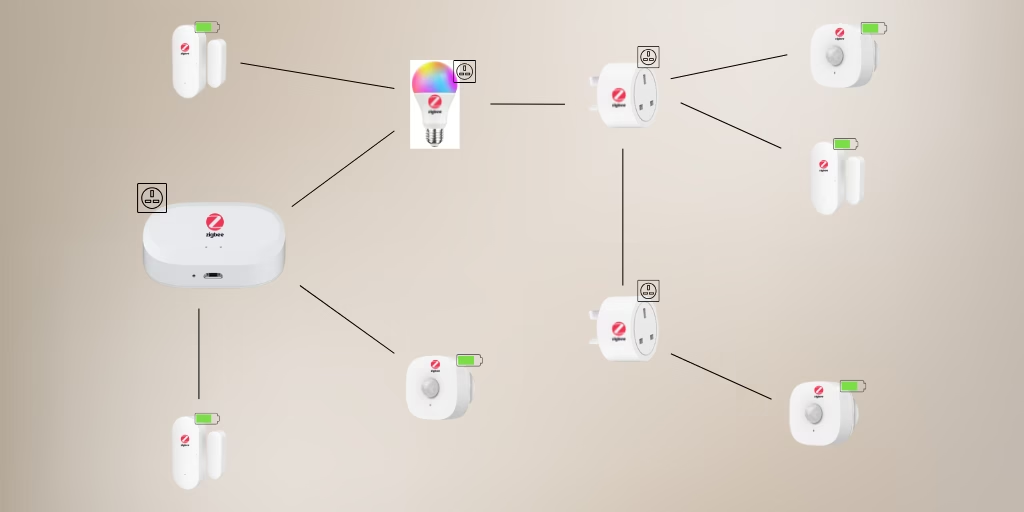Zigbee Smart Home Network Explained
If you are exploring smart home tech, you will come across the word ‘Zigbee’. Zigbee is a low power, wireless communication technology that allows smart devices to communicate with each other. What makes Zigbee ideal for smart devices is that it uses a mesh network, offering great coverage, reliability, and scalability than traditional Wi-Fi or Bluetooth connections.
What is a Zigbee Mesh Network
A Zigbee mesh network is a system where smart devices connect together to form a web of communication, allowing signals to travel greater distances. Unlike Wi-Fi, which relies on a central router where all devices connect directly. Zigbee devices communicate with each other, passing messages along the network to the central Zigbee hub.
How Does Zigbee Work
Zigbee operates on the 2.4 GHz frequency band (like Wi-Fi and Bluetooth) but uses a different method of communication. It relies on three types of devices:
- Coordinator (Zigbee Smart Hub) – The central controller that manages the Zigbee network. Examples: Moes Hub, Amazon Echo 4
- Router (Repeater) – A mains powered devices that extends the network by passing messages between devices.
- End Device – Battery powered devices that connect to the network but do not relay messages. Examples: Contact Sensors, buttons, Motion Sensors.
Which Devices Act as Zigbee Repeaters
Nearly all mains powered Zigbee devices act as a repeater, helping to extend the network. These include:
- Smart plugs
- Smart bulbs
- Smart switches
Battery powered devices do not act as repeaters since they enter low power sleep modes to conserve energy.
How Many Devices Can Use a Zigbee Network
A Zigbee network can support hundreds of devices, more than a typical home Wi-Fi network or Bluetooth. However, the actual limit depends on the Zigbee smart hub:
- A single Zigbee hub can connect directly to around 50 devices.
- With repeaters, the network can expand to over 200 devices.
Does Zigbee Interfere with Wi-Fi or Bluetooth
Zigbee operates on the 2.4 GHz band, the same as Wi-Fi and Bluetooth, so interference can occur. However, Zigbee minimises this by:
- Using different channels within the 2.4 GHz band.
- Sending small bursts of data rather than continuous transmission.
- Using mesh networking to find alternative routes if interference occurs.
Tip: Keep your Zigbee hub at least a 1 meter away from your Wi-Fi router to help reduce the impact of interference
Does Zigbee Mesh Network Require Configuration
No, Zigbee automatically configures the mesh network when new devices are added. The process is simple:
- You add a new device through your smart home app.
- The Zigbee hub detects and connects to it.
- If the device is far from the hub, it automatically routes through a Zigbee repeater.
Is Zigbee Right for You
Zigbee is a reliable, low power, and expandable option for smart home automation. It is ideal for controlling lights, sensors, and security devices, with the added benefit of a self healing mesh network. Also, being so popular there are loads of different Zigbee smart devices from many brands, giving lots of options on price, quality, features etc. If you want a reliable smart home setup, Zigbee is a great choice.





